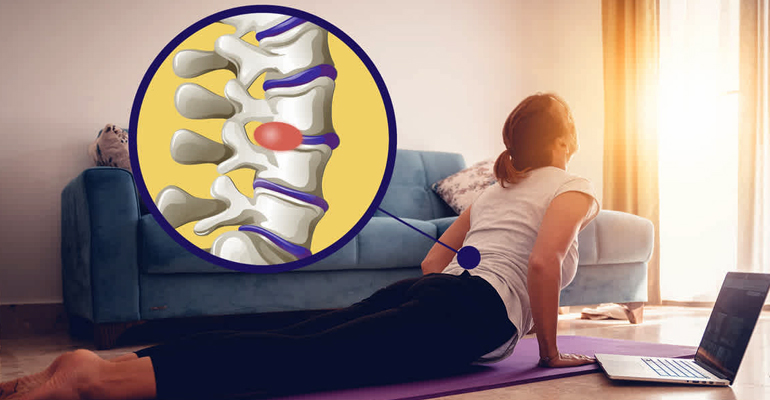-
-
+91-8591556577
-
Slipped Disc

Slipped Disc
A slipped disc, also known as a herniated disc or intervertebral disc herniation, occurs when the soft inner gel of a spinal disc bulges out through a tear in the tougher outer layer. This condition can lead to pain, numbness, or weakness in the affected area and can impact overall mobility.
What Causes a Slipped Disc?
A slipped disc can occur due to various factors, including:
- Age-Related Degeneration: As people age, the discs in the spine lose hydration and elasticity, making them more susceptible to injury and herniation.
- Injury or Trauma: Acute injuries, such as falls or heavy lifting, can cause a disc to slip or rupture. Sudden pressure on the spine can lead to damage in the disc.
- Repetitive Strain: Jobs or activities that require repetitive bending, lifting, or twisting can increase the risk of a slipped disc over time.
- Obesity: Excess weight can put additional stress on the spine, increasing the likelihood of disc herniation.
- Genetics: A family history of disc problems may predispose individuals to develop a slipped disc.
Symptoms of a Slipped Disc
The symptoms of a slipped disc can vary based on the location of the herniation and whether it is pressing on nearby nerves. Common symptoms include:
- Pain: This may be localized to the back or neck, but it can also radiate down the arms or legs, depending on the affected disc.
- Numbness or Tingling: Individuals may experience numbness, tingling, or weakness in the limbs or affected areas, known as radiculopathy.
- Muscle Weakness: The pressure on nerves can lead to weakness in muscles supplied by the affected nerve.
- Pain with Movement: Symptoms may worsen with certain movements, such as bending, twisting, or lifting.
Diagnosing a Slipped Disc
A healthcare provider typically diagnoses a slipped disc through a combination of physical examinations and imaging tests. During the examination, the provider will assess the range of motion, reflexes, and strength. Imaging tests, such as X-rays, MRI, or CT scans, may be ordered to confirm the diagnosis and determine the extent of the herniation.
Treatment Options for a Slipped Disc
The treatment for a slipped disc depends on the severity of symptoms and may include both non-surgical and surgical options.
Non-Surgical Treatments
- Rest and Activity Modification: Avoiding activities that exacerbate pain and resting the back for a short period can help reduce inflammation.
- Physical Therapy: A physical therapist can design a tailored exercise program to strengthen core muscles, improve flexibility, and enhance spinal stability.
- Pain Management: Over-the-counter medications, such as nonsteroidal anti-inflammatory drugs (NSAIDs), can help alleviate pain and inflammation. In some cases, stronger prescription medications may be necessary.
- Epidural Steroid Injections: Corticosteroid injections into the epidural space around the spinal nerves can reduce inflammation and relieve pain.
- Hot and Cold Therapy: Applying heat or cold packs to the affected area can help alleviate pain and reduce inflammation.
Surgical Treatments
If conservative treatments do not provide relief after several months or if symptoms worsen, surgical options may be considered:
- Discectomy: This procedure involves removing the portion of the disc that is pressing on the nerve to relieve pain and restore function.
- Laminectomy: In this procedure, a small section of the vertebra (the lamina) is removed to create more space for the spinal nerves and relieve pressure.
- Spinal Fusion: In cases where stability is compromised, spinal fusion may be performed to permanently connect two or more vertebrae, providing stability to the spine.
Recovery and Rehabilitation
Recovery from a slipped disc varies by individual and treatment approach. Non-surgical treatments can lead to gradual improvement, while surgical recovery may require physical therapy to restore strength and mobility. Adhering to the recommended rehabilitation program is crucial for long-term success and to prevent future issues.
